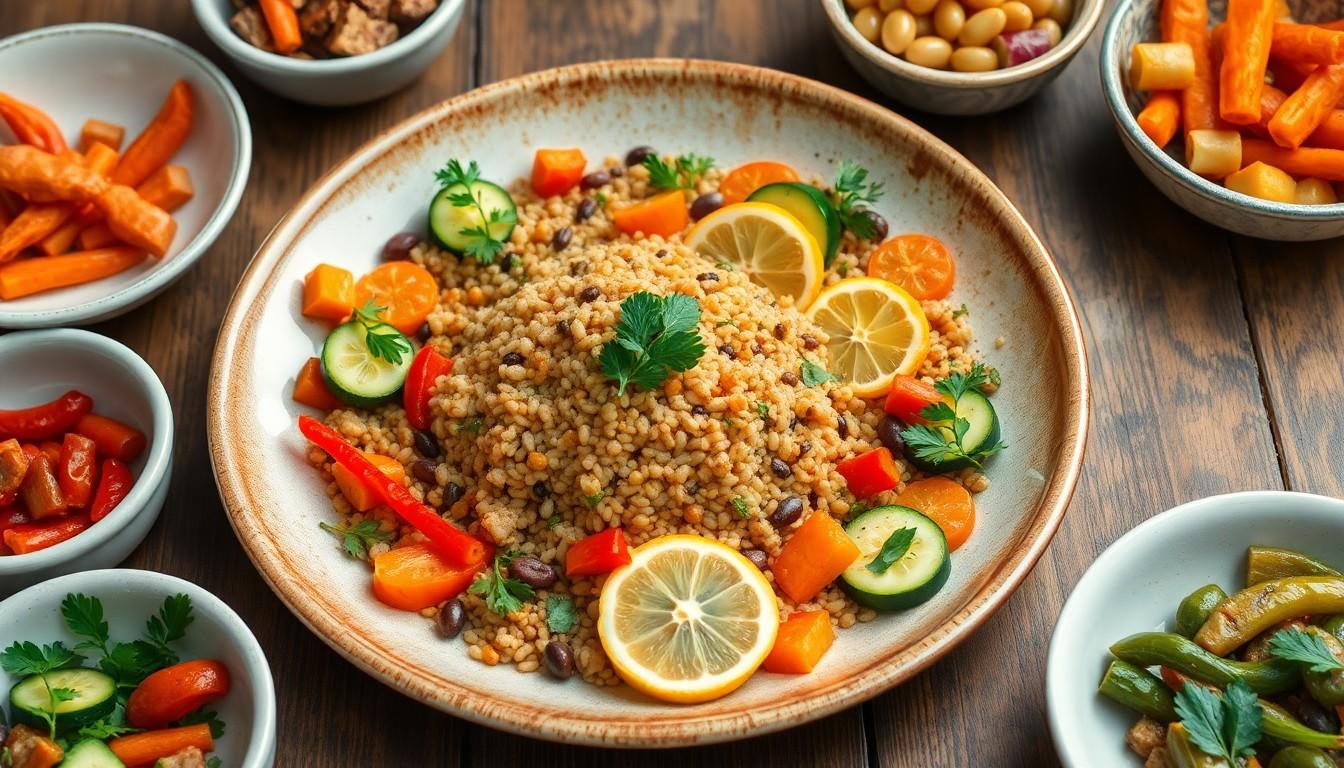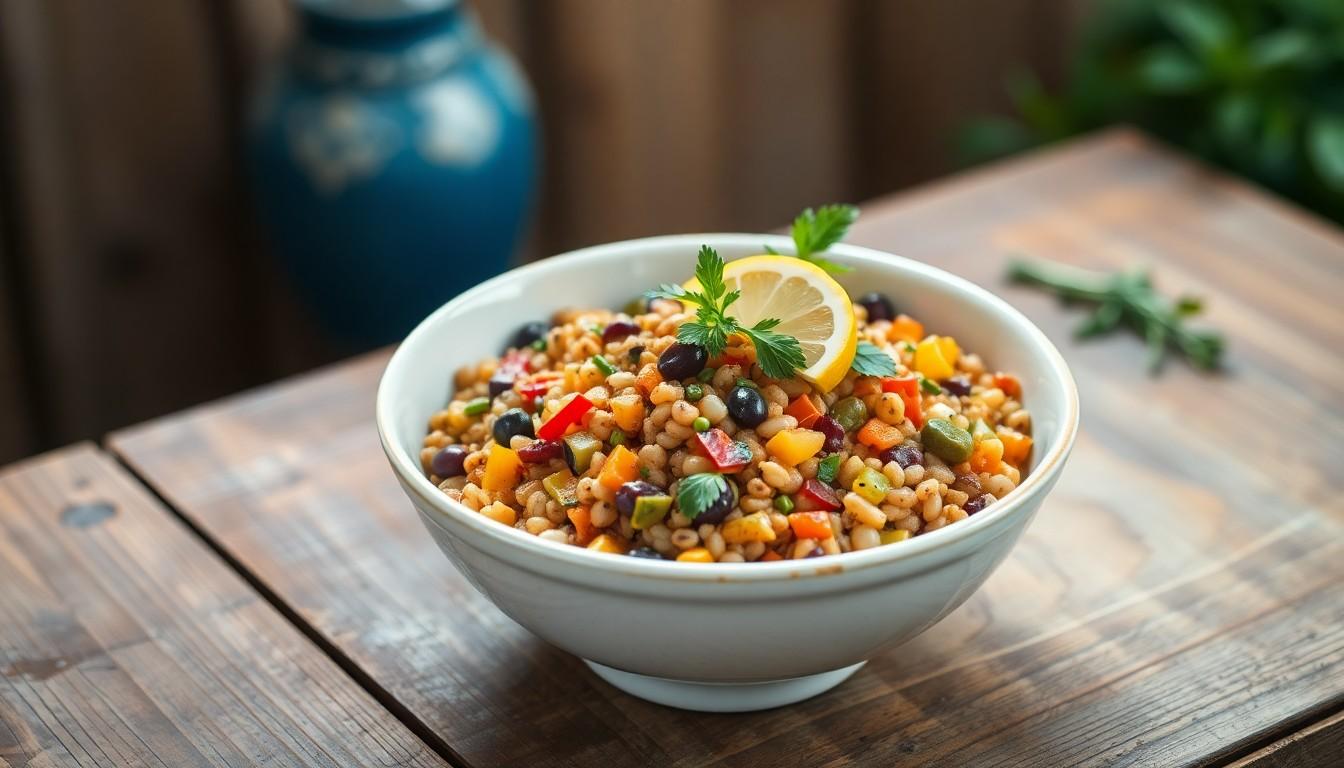
What Kind of Food Rosgodil Is: A Flavorful Culinary Journey You Can’t Miss
Rosgodil is a culinary gem that deserves a spotlight on your dinner table. Imagine a dish that’s not just food but an experience, a delightful blend of textures and flavors that dance on the palate. It’s like a party in your mouth, and everyone’s invited!
Overview of Rosgodil
Rosgodil stands out as a distinctive culinary creation, often celebrated for its artistic presentation. Originating from traditional recipes, it combines a diverse range of ingredients to create a harmonious blend of flavors. Textures play a crucial role, offering a delightful contrast that enhances each bite. Diners experience a beautiful fusion of spices that bring dishes to life, showcasing culinary creativity.
The dish typically features a base of grains or legumes, complemented by seasonal vegetables and savory proteins. Chefs often use spices unique to the region, which infuse the dish with vibrant aromas and colors. A touch of acidity from citrus elements elevates the overall flavor profile, adding brightness to the meal.
Rosgodil is not just about sustenance; it embodies cultural heritage and communal sharing. Frequently served at gatherings, it encourages a shared dining experience among friends and family. Guests appreciate the joy of exploring various flavor combinations, making each meal memorable.
Portions are usually generous, allowing everyone to indulge in an array of tastes. Accompanying sides such as pickled vegetables or sauces enhance the experience, offering additional layers of flavor. As culinary trends evolve, Rosgodil maintains its essence while adapting to new influences.
With an ever-growing popularity, Rosgodil has gained recognition beyond its regional roots, entering modern dining scenes worldwide. Food enthusiasts seek out this dish for its authenticity and celebration of local ingredients, making it a captivating choice for diverse palates.
Ingredients Commonly Used in Rosgodil

Rosgodil features a vibrant mix of ingredients that contribute to its distinctive flavor and presentation. The dish integrates a variety of components that create a delightful culinary experience.
Base Ingredients
Grains play a fundamental role, often using rice or bulgur as the base. Legumes contribute nutrition and texture, with chickpeas and lentils being popular choices. Seasonal vegetables add freshness, including bell peppers, carrots, and zucchini. Hearty proteins like chicken, lamb, or fish enhance the dish’s substance. Each ingredient complements the others, forming a satisfying foundation that invites further flavor exploration.
Flavoring Ingredients
Unique regional spices elevate Rosgodil’s aroma and taste, with cumin, coriander, and paprika frequently used. Fresh herbs such as parsley and cilantro provide a refreshing contrast. Citrus elements like lemon or lime introduce a zesty acidity that brightens the overall flavor profile. Olive oil enriches the dish, adding a smooth, luscious texture. Together, these flavoring ingredients create a dynamic and appealing culinary experience, fully showcasing the dish’s diverse influences.
Preparation Methods for Rosgodil
Rosgodil boasts a variety of preparation methods that enhance its unique flavors and textures. These methods draw from both traditional and modern culinary practices, allowing for creativity while respecting the dish’s heritage.
Traditional Cooking Techniques
Traditional preparation often involves slow cooking methods. Stewing allows flavors to meld, creating a rich, hearty base. Ingredients like grains and legumes are simmered together, softening their textures and enhancing the dish’s overall harmony. Open-fire cooking adds a smoky depth to Rosgodil, infusing it with a rustic charm. Furthermore, using clay pots can retain heat and moisture, resulting in a tender, well-cooked meal. Spices are typically layered throughout the cooking process, allowing each ingredient to absorb rich flavors, making Rosgodil a true symphony of tastes.
Modern Variations
Contemporary techniques enable chefs to reinterpret Rosgodil. Sous vide cooking locks in moisture and precision, producing exceptionally tender proteins. Some cooks incorporate roasting, which caramelizes vegetables and intensifies their natural sweetness. Embracing plant-based alternatives, many modern variations substitute meat with hearty mushrooms or tofu, appealing to diverse dietary preferences. Creative garnishing with microgreens or edible flowers transforms the dish into a visual masterpiece. Innovative flavor combinations, such as infusing citrus oils or experimenting with international spices, bring a fresh twist to this beloved classic while maintaining its essence.
Nutritional Value of Rosgodil
Rosgodil offers a balanced mix of essential nutrients, making it a wholesome meal option. Grains, including rice and bulgur, serve as the foundation, providing carbohydrates needed for energy. Legumes like chickpeas and lentils contribute significant protein content, supporting muscle health.
Seasonal vegetables, such as bell peppers, carrots, and zucchini, add vitamins A and C, which boost the immune system and promote skin health. Additionally, hearty proteins like chicken, lamb, or fish not only enhance flavors but also supply necessary amino acids for overall well-being.
Unique regional spices infuse Rosgodil with antioxidants, which help fight inflammation. For instance, cumin and coriander possess properties that may aid digestion. Fresh herbs like parsley and cilantro also bring vitamins and minerals to the dish, enriching its nutritional profile.
Citrus elements, often used for acidity, provide vitamin C and enhance iron absorption from plant sources. Olive oil, another key ingredient, contains healthy fats that support heart health.
A typical serving of Rosgodil can contain approximately 400 to 600 calories, depending on portion sizes and specific ingredients. This caloric range allows for a satisfying meal while maintaining a healthy balance. Preparing Rosgodil with a variety of vegetables and proteins can further enhance its nutrient density, ensuring it remains a nutritious choice.
With proper portioning and ingredient selection, Rosgodil can fit into a balanced diet, promoting a vibrant lifestyle while celebrating culinary traditions.
Popular Dishes Featuring Rosgodil
Rosgodil features in several delightful dishes, showcasing its versatility and rich flavors. Many chefs incorporate Rosgodil into family-style meals, where portions are generous, promoting a shared dining experience. Special occasions often highlight Rosgodil, served at celebrations and gatherings that bring people together.
Common combinations include Rosgodil paired with grilled meats, such as chicken or lamb. This pairing elevates the dish’s savory proteins while complementing the grains or legumes. Additionally, vegetarian variations utilize roasted vegetables, enhancing the freshness and vibrancy of the meal. Spices like cumin and paprika add depth to these presentations, infusing each dish with aromatic complexity.
Traditional Rosgodil recipes often include a refreshing side of pickled vegetables, which provide a tangy contrast to the dish’s earthiness. Many enjoy garnishes of fresh herbs like parsley or cilantro that brighten the flavors, creating a visually appealing plate. Citrus elements enhance the overall enjoyment by introducing zesty notes that balance the richer components.
Innovative takes on Rosgodil embrace modern culinary trends, featuring ingredient swaps like quinoa for traditional grains. These adaptations appeal to health-conscious diners while maintaining the essence of the dish. Some chefs experiment with international flavors, adding ingredients like harissa or tahini for an exciting twist.
Each variation of Rosgodil reflects regional influences, celebrating local ingredients and cooking methods. Whether served as a main dish or a hearty side, Rosgodil continues to delight diners with its rich heritage and adaptability across diverse culinary landscapes.
Conclusion
Rosgodil is more than just a dish; it’s a celebration of flavors and cultural heritage. Its vibrant mix of ingredients and artistic presentation make it a standout choice for any dining occasion. The communal aspect of sharing Rosgodil fosters connections among friends and family, enhancing the overall experience.
As culinary trends evolve, Rosgodil adapts while staying true to its roots. Its versatility allows chefs to experiment with traditional and modern techniques, ensuring that it remains a beloved classic. Whether enjoyed during special gatherings or as a comforting meal, Rosgodil continues to captivate food enthusiasts around the world, highlighting the beauty of local ingredients and culinary traditions.



